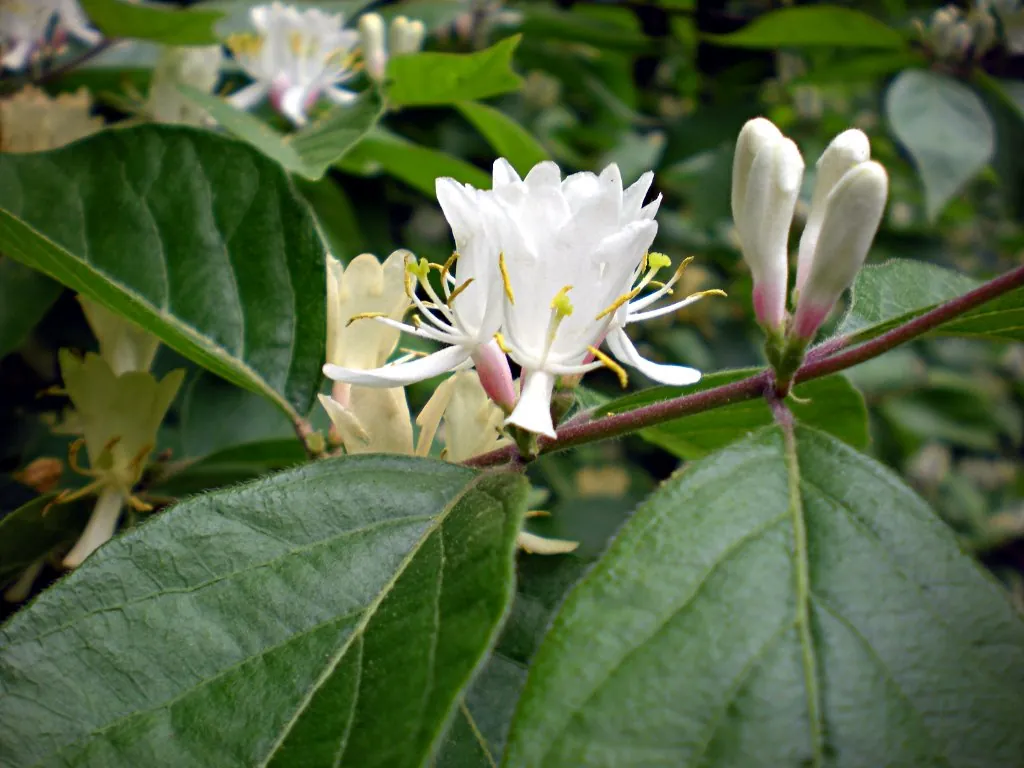 Photographed May 8.
Photographed May 8. Photographed May 8.
Photographed May 8.Also called Bush Honeysuckle. A tall bush (six feet or more) with flowers very much like those on Japanese Honeysuckle, both white and buff on the same bush. (Like Japanese Honeysuckle, it came from Japan.) It grows at the edge of the woods, and is particularly fond of roadsides. The bush above grew at the wooded edge of a yard in Mount Lebanon, where it was blooming in early May. The bush is almost as striking in fruit as in flower: the berries below were on a bush near the Galleria in Mount Lebanon.
 Phtographed October 25.
Phtographed October 25.In his own Manual, Gray spells the species name morrowi, but the spelling with double I seems to be the accepted one now.
Gray describes the genus and the species:
LONICERA L. HONEYSUCKLE. Calyx-teeth very short. Corolla tubular or funnel-form, often gibbous at the base, irregularly or almost regularly 5-lobed. Berry several-seeded. Erect or climbing shrubs. Leaves entire. Flowers often showy and fragrant. (Named in honor of Adam Lonitzer, latinized Lonicerus, a German herbalist of the 16th century.) A large boreal genus most abundant in Asia and long popular in cultivation.
L. morrowi Gray. Shrub, 1.5-2 m. high, soft-downy; branches spreading; leaves oblong, rounded or subcordate at base, dark green and somewhat rugose above, much paler and grayish-tomentose beneath, obtuse or barely acutish; calyx-teeth hirsute or ciliate; corolla-lobes subequal, nearly as long as the tube, widely spreading, white or cream-colored ; berries bright red. Frequently cultivated, and now locally established in e. Mass. (Introd. from Japan.)